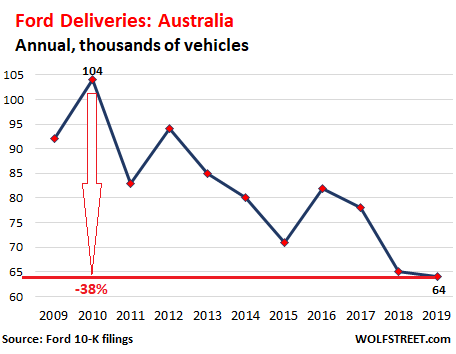

However, a correlation coefficient with an absolute value of zero.9 or higher would characterize a really sturdy relationship. A constructive correlation coefficient implies that as the value of one variable will increase, the worth of the other variable increases; as one decreases the opposite decreases. A unfavorable correlation coefficient indicates that as one variable will increase, the opposite decreases, and vice-versa. If r is close to 0, it means there is no relationship between the variables. If r is positive, it signifies that as one variable gets bigger the opposite gets larger.
We need to first construct a table as follows to get the required values of the formula. However, more than one or two is usually not recommended because the more control variables, the less reliable our test. For example, types of correlation we might want to see if there is a correlation between the amount of food eaten and blood pressure, while controlling for weight or amount of exercise. Let \(x\) denote height of father and \(y\) denote height of son.
Correlation is a statistical measure that expresses the extent to which two variables are linearly related . It’s a common tool for describing simple relationships between data sets. When two sets of data show high fidelity to change with respect to one another we say they have a high correlation. We use the correlation coefficient, r to quantify the magnitude of the relationship. The correlation coefficient r can have a value between -1 to 1. Here, 1 represents a perfect positive correlation between the two data sets, 0 represents no correlation and -1 represents a perfect negative correlation.
Examples of Correlational Research
The value of the correlation coefficient would lie between + 0.7 and + 1. In a perfect negative correlation, the dots lie on the same line and are downward sloping. The correlation coefficient would be equal to -1, when the correlation is perfectly negative. In a perfect positive correlation, all the dots lie in a straight line and are upward sloping.
What are the 4 types of correlation coefficient?
- Covariance Correlation Coefficient.
- Pearson's Correlation Coefficient.
- Spearman's Correlation Coefficient.
- Polychoric Correlation Coefficient.
Causation is one plausible explanation for the association, but this is not the only one. The correlation is said to be positive if the values of two variables move in the same direction. It indicates that investigators do not have to use formal technique to modify factors in agreeing or dispute with such a concept.
Simple correlation or Linear correlation
It is the most common formula used for linear dependency between the data set. When the coefficient comes down to zero, then the data will be considered as not related. Yield of paddy and the use of fertilizers is an example of simple correlation as yield of paddy depends on the use of fertilizers i.e. presence of one variable affects another variable.

After you’ve checked for a correlation amongst your factors, you should do a regression analysis. Zero Correlational Analysis is a method of analysis in which there is no connection between. A form of similar experiment known as zero correlational research combines multiple parameters which were not mathematically related. We do correlational study on a daily basis; consider how you develop a link between phone ringing at a precise moment and the appearance of the delivery driver. As it’s crucial to grasp the many forms of correlation which are accessible, but also how to do them.
What is the Correlation Coefficient?
In this chapter, we study simple correlation only, multiple correlation and partial correlation involving three or more variables will be studied in higher classes . Ans.2 A rank correlation is any of several statistics that measure an ordinal association, the relationship between rankings of different variables or different rankings of the same variable. In statistics, the coefficient of multiple correlation is a measure of how well a given variable can be predicted using a linear function of a set of other variables.
Whether a correlational value is statistically vital relies upon largely on the scale of the pattern. The range of values for the correlation coefficient is -1.0 to 1.0. Anytime the correlation coefficient, denoted as r, is greater than zero, it is a optimistic relationship. Variables are said to be negatively correlated if increase in one variable leads to decrease in other variable and vice versa. For positive correlation, the graph will be an upward curve whereas in case of negative correlation the graph will be downward curve.
Therefore, it is important to be cautious when interpreting correlations and to consider other factors that may be influencing the relationship. Correlational studies are quite widespread in psychology, particularly as a result of some issues are inconceivable to recreate or research in a lab setting. Instead of performing an experiment, researchers may gather data from individuals to have a look at relationships that will exist between totally different variables. From the info and analysis they gather, researchers can then make inferences and predictions in regards to the nature of the relationships between completely different variables.
Co-efficient of Correlation:
We will not go into the small print of creating the model, because it is too detailed for this course. It’s sufficient to attract your attention to the multivariate correlation techniques in your textual content in Table 12.4 on web page 274. Each of these techniques provides a way of developing a prediction mannequin primarily based on correlation coefficients computed from a set of variables.
What is correlation & its types?
A correlation reflects the strength and/or direction of the association between two or more variables. A positive correlation means that both variables change in the same direction. A negative correlation means that the variables change in opposite directions.
A presentation of this end result for population distributions is given by Cox & Hinkley. The module also includes a variation on this kind called partial correlation. The latter is useful whenever you want to take a look at the relationship between two variables while eradicating the impact of 1 or two other variables. In these outcomes, the Spearman correlation between porosity and hydrogen is zero.590058, which signifies that there’s a positive relationship between the variables.
Covariance of x and y simply is, if we calculate the covariance of x and y, then it gives us person’s r coefficient for any sample. Sumission is nothing but the entire sum that we will do, of all the values that will be called my summission. My data of both the variables should follow normal distributions. Before using Pearson’s r, we will have to keep in mind some of its assumptions like both my variables should be continuous, which means they should be numerical variables.
The correlation coefficient usually expressed as r, signifies a measure of the path and power of a relationship between two variables. Remember that A adverse correlation is sort of a unfavorable relationship, the individuals within the relationship are moving in opposite directions. Remember that The sign tells you the course of the connection and the quantity beside it tells you how robust that relationship is. To choose the strength of the relationship consider the precise value of the correlation coefficient. Numerous sources present related ranges for the interpretation of the relationships that approximate the ranges on the display. By plotting each knowledge pair , you will have created a graph name a scatterplot or scatterdiagram.
They are both used when the variables being correlated are within the form of ranks. But tau is preferred when the sample measurement is lower than 10, whereas rho is preferred when the pattern size is bigger than 10 and fewer than 30. A relationship between two variables, x and y, in which the change in value of one variable is exactly proportional to the change in value of the other.
- Rise in price of a commodity reduces its demand and vice – versa.
- The value of the coefficient is affected by the presence of extreme values.
- Thus, the variable speed and electricity output have a positive correlation here.
- In the next module we’ll be covering which are the different types of hypothesis tests.
- The value of one variable does not change in relation to the value of the other variable.
A correlation of –1 indicates a perfect negative correlation, meaning that as one variable goes up, the other goes down. The power of the relationship varies in degree based on the value of the correlation coefficient. For instance, a worth of zero.2 exhibits there is a positive correlation between two variables, but it’s weak and likely unimportant. Analysts in some fields of study don’t think about correlations necessary till the worth surpasses no less than zero.8.
The correlation coefficient is a statistical measure of the strength of the relationship between the relative movements of two variables. The uncooked rating values of the X and Y variables are offered within the first two columns of the following desk. The second two columns are the X and Y columns reworked using the z-rating transformation.
CorrelationCovarianceIt is a measure of how closely two random variables are connected. The impact of a unit change in the known variable on the estimated variable is indicated by the regression coefficient. Correlation coefficient is independent of the change of origin and scale.
A negative correlation occurs when the values of two variables move in opposite directions. In other words, an increase or decrease in one variable causes a decrease or increase in the other variable. When the variable \(x\) increases, the variable \(y\) decreases. Similarly, dispersion is the extent to which values in a distribution differ from the centre. The measures of dispersion are range, quartiles, average deviation, and standard deviation. Comparing two numeric variables and studying the relationship between them involves the analysis and study of two variables.
Correlation is said to be linear when the amount of change in one variable tends to bear a constant ratio to the amount of change in the other. Correlational study just demonstrates the association between variables; it does not imply causality. Because correlational research could only be used to discover the statistical link between two parameters, it is limited. It can’t be used to find a connection among more than dependent parameters. In correlational research, a coefficient value reveals if there is a favorable, unfavorable, or non-existent network of connected variables.
What are the different types of correlation shapes?
The shape of the correlation can be described as: linear, exponential and U-shaped. The strength of the correlation can be determined by how closely packed the points are to each other on the graph. Points that end up far outside the general cluster of points are known as outliers.